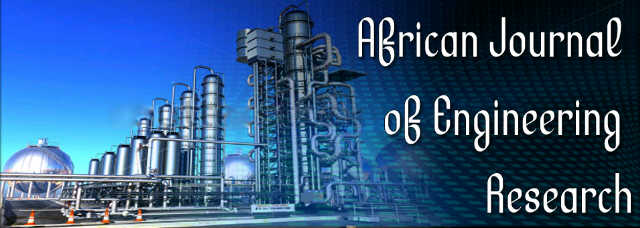Characterization and development of asbestos-free brake pad, using snail shell and rubber seed husk
Abhulimen E. A. and Orumwense F. F. O.African Journal of Engineering Research
Published: June 30 2017
Volume 5, Issue 2
Pages 24-34
Abstract
Development of asbestos-free brake pad was investigated with a view to replacing the use of asbestos, whose dust is carcinogenic. This is an interim report on the development and characterization of asbestos-free automotive brake pad, using snail shell as a reinforcement and rubber seed husk as the frictional filler material, with a view to exploiting the characteristics of snail shell and rubber seed husk, which are largely deposited as waste in our environment. The effective and eco-friendly utilization of these materials, for a scientific application has always been a challenge. The pulverized snail shells were sieved into sieve grades of 125, 250, 355, 500 and 710 µm. The composite brake pad was produced in the ratio of 65% snail shell-10% rubber seed husk-25% resin, using compression moulding. The characterization of the snail shell was investigated through X-ray Fluorescence Spectrometry (XRF), X-ray diffractometer (XRD), thermogravimetric analysis (TGA) and differential thermal analysis (DTA). The brake pad was investigated for properties such as hardness, compressive strength, abrasion resistance, density, coefficient of friction and porosity. The microstructure reveals uniform distribution of resin in the snail shell The results obtained showed that the final the sieve size, the better the properties. The results reported has compared favourably with that of common brake pads (asbestos based and palm kernel shell based). This work confirmed that snail shells and rubber seed husk can actually be used in the production of brake pad.
Keywords: Snail shell, rubber seed husk, density, abrasion resistance, porosity, microstructure.
Full Text PDF
